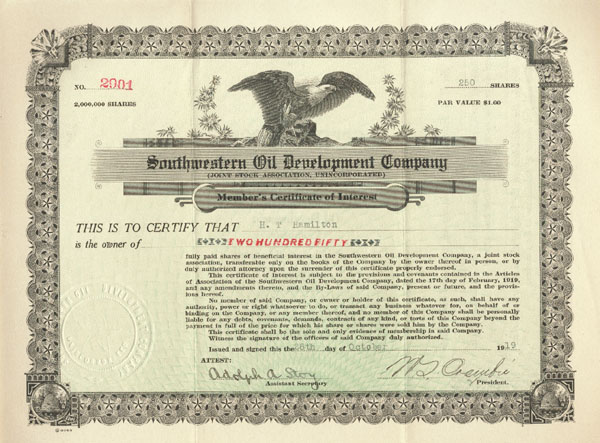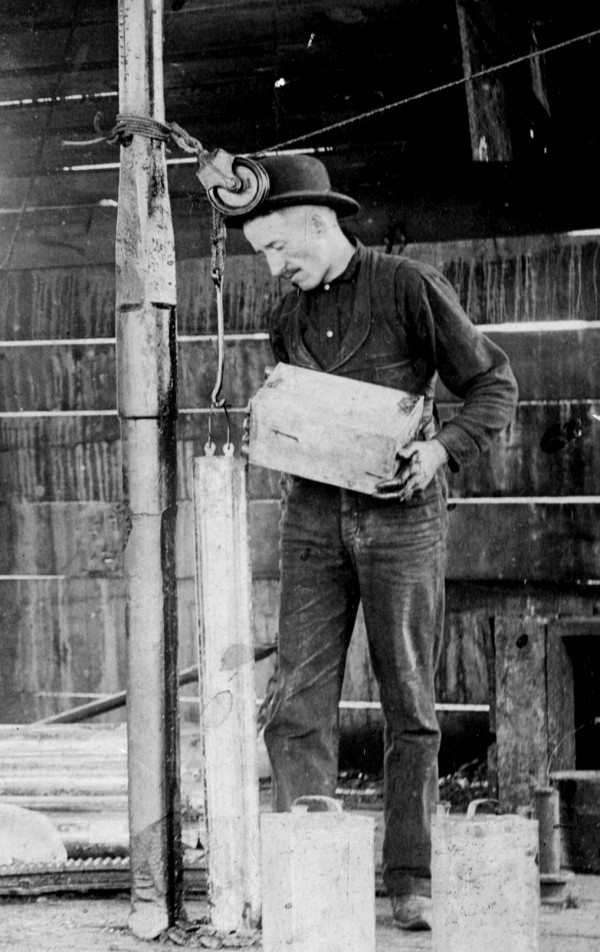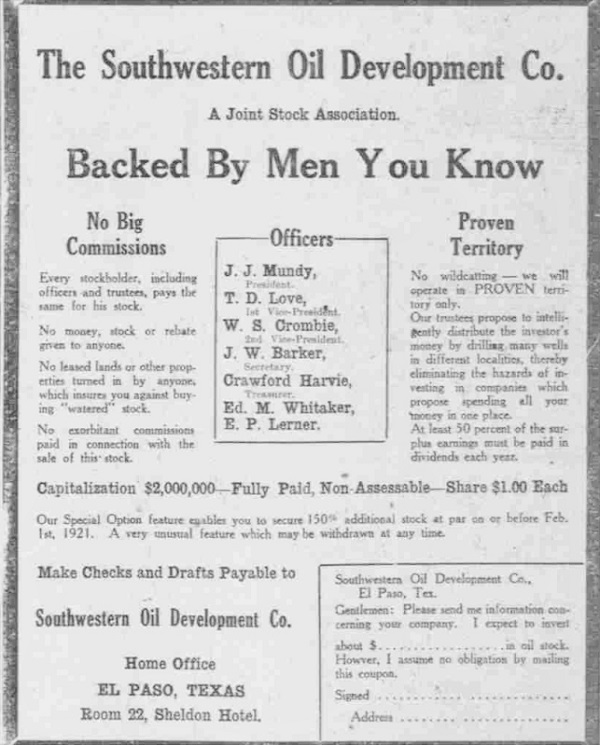Southwestern Oil Development Company

A geyser of oil from a wildcat well in Eastland County, Texas, in 1917 made headlines worldwide. “Roaring Ranger” erupted in revealed a North Texas oilfield that would help win World War I.
Although many oil exploration companies prospered in the Ranger, Texas, oilfield, a serpent doomed one in June 1920.
According to the Engineering and Mining Journal, Southwestern Oil Development Company was established in June 1919 by prominent mining men from New Mexico, Arizona and Texas.
Capitalized at $2 million, the company offered 600,000 shares to the public at $1 par value. “Proceeds from the sale of same will be used in the purchase of properties and their development,” the founders proclaimed.
Their new company would soon begin drilling several miles northwest of Ranger on the border of Eastland County, where an boom had been underway since October 17, 1917, when the McCleskey No. 1 Well struck oil at a depth of 3,432 feet and roared in with a daily flow of 1,600 barrels.
That discovery gained international fame for Ranger as the town whose oil wiped out critical oil shortages during World War I, allowing the Allies to “float to victory on a wave of oil.”
Visiting after the war, a young Conrad Hilton saw long lines of roughnecks seeking a place to stay. He bought the two-story red brick motel in Cisco. Learn more in Oil Boom Brings First Hilton Hotel.

Conrad Hilton visited Cisco, Texas, intending to buy a bank, not a hotel. When the bank deal fell through, he went to the train station. Across the street was a two-story red brick building called the Mobley Hotel. Hilton noticed the large number of roughnecks from the Ranger oilfield waiting in line for a room. The rest is history.
Meanwhile, with “Roaring Ranger” still in the headlines, Southwestern Oil Development Company assured potential investors that it would avoid risky wildcat prospects – and drill only near areas of proven potential, including a well producing 9,000 barrels of oil a day.
Shareholders were encouraged by telegrams: “The Southwestern properties are right in the center of the Ranger district with producing wells on all sides which gives it every indication of a good gamble.”
By June 2, 1920, the year-old company’s exploratory well in the Ranger oilfield had reached 3,000 feet with eight-inch casing at a cost of $75,000.

Simply pouring nitroglycerin was risky enough in the late 19th century oil patch. Doing it at night for an illegal well “shooting” led to the term “moonlighting.”
The well, in Stephens County’s Gunsight district, penetrated a limestone formation about 450 feet above the more prolific Ranger limestone.
To begin production from the newly completed well, an expert “shooter” was brought in – see Shooters – A “Fracking” History.
Disaster ensued as the “heavy charge of nitroglycerin” was lowered into the well. “Enter the serpent,” explained the Bisbee Daily Review.
“The shooter had lowered the charge to something over 200 feet. At that point a huge snake slid silently from under the derrick platform and onto the platform close to the shooter,” the newspaper reported. “The man naturally became nervous. He unconsciously pressed the trigger and the charge was exploded when it was little more than half way down.”
With the $75,000 well wrecked and an effort to drill another nearby abandoned, Southwestern Oil Development Company disappears from records. Scripophily collectors today offer this snake-bit company’s obsolete stock certificates for about $25.
Learn more North Texas petroleum history (and other big oil and natural gas discoveries in Electra and Burkburnett) in Pump Jack Capital of Texas.
___________________________________________________________________________________
The stories of exploration and production companies joining petroleum booms (and avoiding busts) can be found updated in Is my Old Oil Stock worth Anything? The American Oil & Gas Historical Society preserves U.S. petroleum history. Please support this AOGHS.ORG energy education website. For membership information, contact bawells@aoghs.org. © 2018 Bruce A. Wells.



